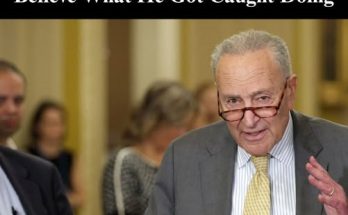The White House is reportedly preparing to assume direct control over seating assignments in the press briefing room, a move officials say reflects the Trump administration’s ongoing efforts to assert influence over the press corps.
Currently, seating assignments are managed by the White House Correspondents’ Association (WHCA), an independent organization responsible for distributing seats and maintaining relations between the White House and journalists. The association, governed by a rotating board of reporters, has long held authority over the arrangement of front-row seats, media booths, and desks in the briefing room. Sources say the WHCA may oppose any effort to bypass its longstanding role.
News of the potential seating changes drew praise from some Trump supporters, who viewed the move as a continuation of efforts to limit mainstream media influence while elevating pro-Trump outlets. Axios first reported the story Sunday morning, prompting endorsements on social media, including a post from Sean Spicer, Trump’s first-term press secretary. Writing to Press Secretary Karoline Leavitt on X, Spicer said, “Yes to this – keep it going @PressSec.”
A senior White House official confirmed the plan to CNN but declined to provide further details. According to journalists familiar with the briefings, changes to the seating chart have been anticipated, particularly given the symbolic value such a reorganization would hold for pro-Trump media outlets. Many reporters spoke on condition of anonymity because their employers had not authorized public comment.
“Where people sit doesn’t really matter,” one correspondent said. “But it does matter when the White House attempts to wrest control from an elected body of journalists in order to influence which questions are asked and how stories are covered.”
Under the current system, front-row seats are typically occupied by journalists from the nation’s largest TV networks, wire services, newspapers, and radio outlets. The WHCA periodically updates the seating chart to reflect shifts in the media landscape, rotating access among roughly 60 outlets across 49 seats. The organization also assigns media workspaces within the White House.
Since Trump’s return to the presidency in January, the WHCA has come under sustained criticism from the administration. Some correspondents report that Trump has sought to diminish—or even eliminate—the association’s authority entirely. In February, The Associated Press, a fixture of White House coverage for over a century, was barred from press conferences and other events. Leavitt subsequently announced that the White House would determine which reporters from the “press pool” accompany the president on trips and at smaller events, further bypassing the WHCA’s traditional role.
Recent weeks have seen the administration invite lower-rated networks and highly partisan pro-Trump outlets to cover briefings. During one session, an employee of One America News disguised a compliment as a question, eliciting public praise from Trump. Leavitt has also promoted right-wing podcasters and independent commentators by creating a so-called “new media seat” in the briefing room.
Journalists say these developments echo earlier disruptions, such as the Pentagon’s “rotation” program, which removed established outlets like NPR and CNN from their workspaces in favor of smaller, pro-Trump organizations. Analysts suggest that any White House-controlled seating chart would likely favor right-wing podcasters and online content producers, though logistical challenges remain, as many such personalities live outside Washington and are not regular attendees of press briefings.
The briefing room’s capacity has previously been a point of contention. In early 2020, during COVID-19 restrictions, CNN reporter Kaitlan Collins was asked to swap her first-row seat with a back-row colleague. The White House relented only after both journalists declined the change.
Jonathan Karl, then president of the WHCA, emphasized the longstanding bipartisan tradition of journalist-managed seating. “We will challenge any effort to pick and choose which outlets are there or dictate how they are seated,” Karl said.
As the administration weighs its next steps, correspondents and media watchdogs are closely monitoring how changes to the briefing room could reshape access, coverage, and the dynamics between the press and the White House.


